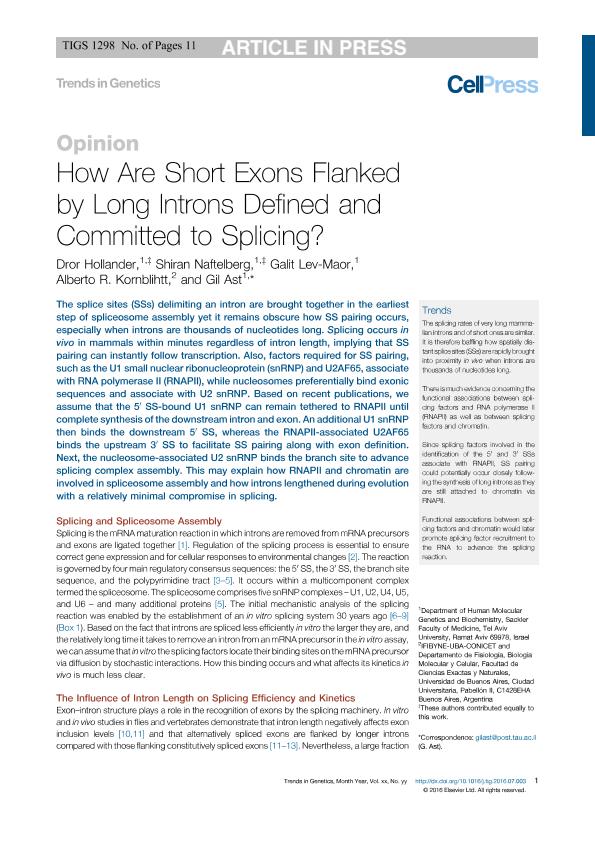Artículo
How Are Short Exons Flanked by Long Introns Defined and Committed to Splicing?
Fecha de publicación:
10/2016
Editorial:
Elsevier Science London
Revista:
Trends In Genetics
ISSN:
0168-9525
Idioma:
Inglés
Tipo de recurso:
Artículo publicado
Clasificación temática:
Resumen
The splice sites (SSs) delimiting an intron are brought together in the earliest step of spliceosome assembly yet it remains obscure how SS pairing occurs, especially when introns are thousands of nucleotides long. Splicing occurs in vivo in mammals within minutes regardless of intron length, implying that SS pairing can instantly follow transcription. Also, factors required for SS pairing, such as the U1 small nuclear ribonucleoprotein (snRNP) and U2AF65, associate with RNA polymerase II (RNAPII), while nucleosomes preferentially bind exonic sequences and associate with U2 snRNP. Based on recent publications, we assume that the 5′ SS-bound U1 snRNP can remain tethered to RNAPII until complete synthesis of the downstream intron and exon. An additional U1 snRNP then binds the downstream 5′ SS, whereas the RNAPII-associated U2AF65 binds the upstream 3′ SS to facilitate SS pairing along with exon definition. Next, the nucleosome-associated U2 snRNP binds the branch site to advance splicing complex assembly. This may explain how RNAPII and chromatin are involved in spliceosome assembly and how introns lengthened during evolution with a relatively minimal compromise in splicing.
Palabras clave:
Splicing
Archivos asociados
Licencia
Identificadores
Colecciones
Articulos(IFIBYNE)
Articulos de INST.DE FISIOL., BIOL.MOLECULAR Y NEUROCIENCIAS
Articulos de INST.DE FISIOL., BIOL.MOLECULAR Y NEUROCIENCIAS
Citación
Hollander, Dror; Naftelberg, Shiran; Lev Maor, Galit; Kornblihtt, Alberto Rodolfo; Ast, Gil; How Are Short Exons Flanked by Long Introns Defined and Committed to Splicing?; Elsevier Science London; Trends In Genetics; 32; 10; 10-2016; 596-606
Compartir
Altmétricas




